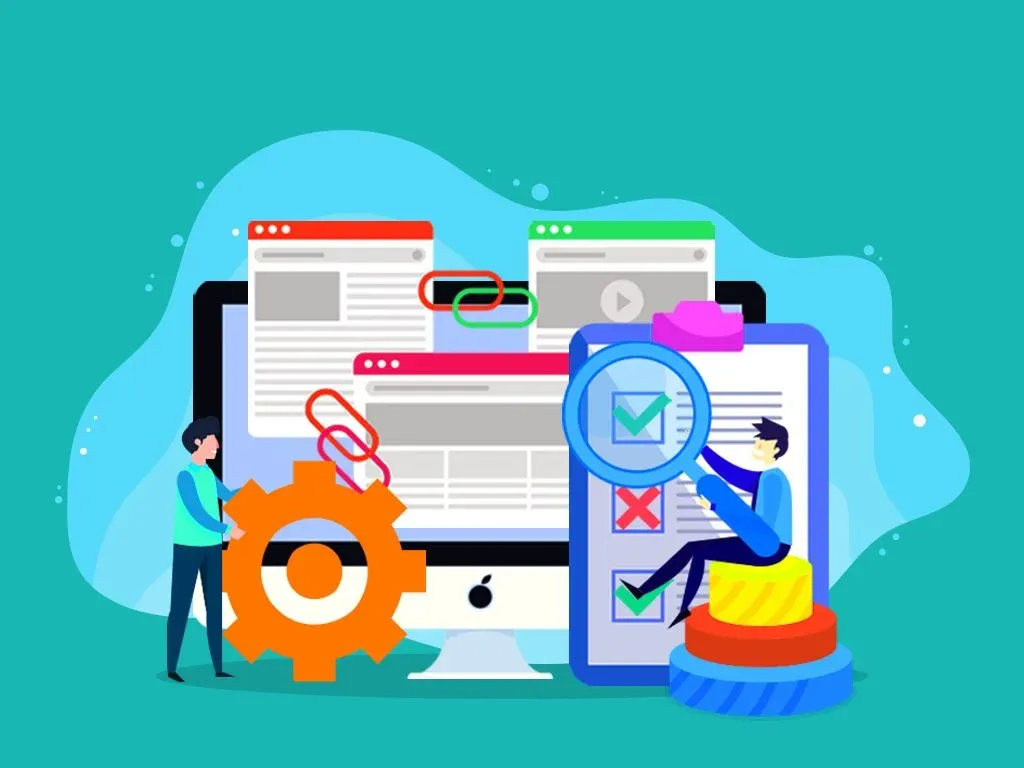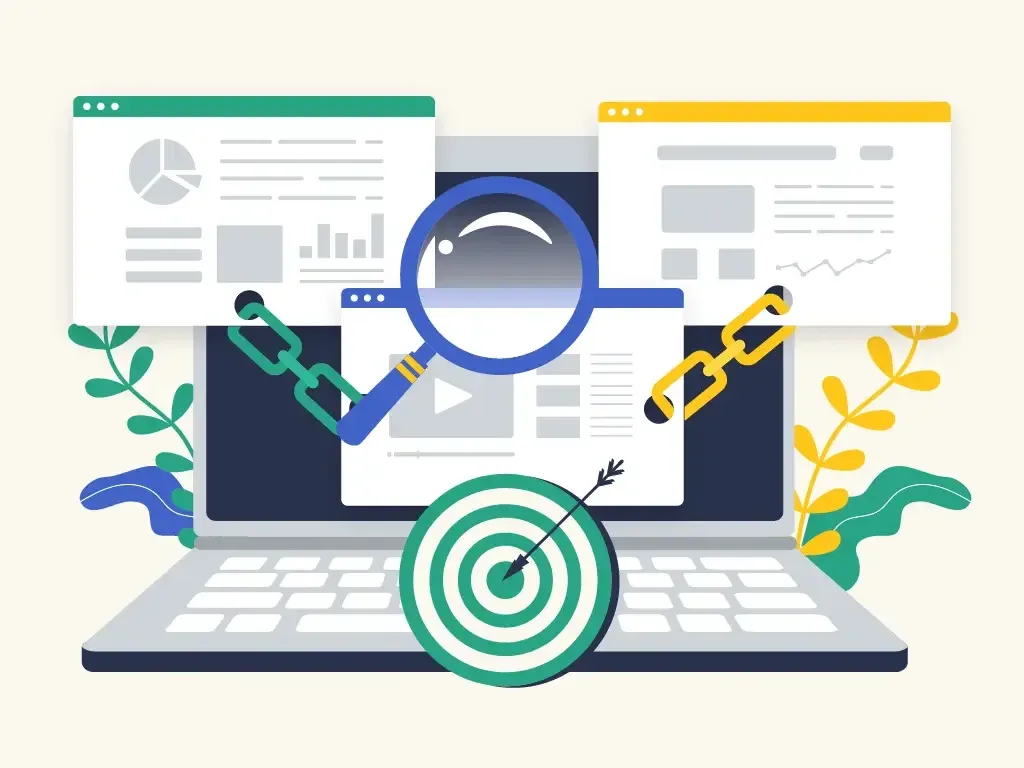Connecting The Dots: Pro Tips For Effective Internal Linking

If you want to improve your search engine optimization (SEO), internal linking is more than just connecting pages. It's also telling a story that makes the user experience better, makes the content more relevant, and boosts your website's authority further in the digital world.
The dots you connect in your content are not just links if you want to be great at search engine optimization in the year 2024. They are the roads that will lead you to success.
Why Internal Linking For SEO Matters In 2024?
As SEO grows, internal linking makes the page more authoritative, the user experience better, and the information more relevant.
Here's how to optimize your content with internal linking best practices:
Enhanced User Experience
Internal links shape the user experience and make it easy to move around. By leading users logically through content, these links lower bounce rates and boost engagement by making sure that every click enhances the digital experience, emphasizing the importance of internal link building.
Content Relevance And Context
The great thing about internal links is that they can put information in its proper place. Learn how to carefully use anchor text to show thematic focus and make sure that every link helps the user understand better about internal link structure.
Distributed Page Authority
Use internal links to spread page authority for a well-balanced and trustworthy site structure. Find out how these links affect SEO by making pages more visible and building link equity across the website, especially with the strategy of page-to-Page Linking.
SEO Keyword In Internal Link Optimization
Internal links are the first step in strategic phrase integration. Find out how anchor text optimization fits in with your SEO keyword plan when it comes to internal links. With this synergy, every link helps with browsing and getting found for keywords, showcasing the internal linking benefits for SEO.
Crawlability And Indexing
Inside links help search engine crawlers find their way around and process content. Bring attention to how they help search engines understand the structure and worth of pages, which makes sure that your whole digital domain is found and indexed, emphasizing the importance of Internal Link Building for effective SEO.
Reduced Bounce Rates
When you have a good internal link, bounce rates go down. Use links in a smart way to get people to read more. Link invitations make a visit into an interesting exploration, which shows how user behavior is related to SEO success.
Crafting An Effective Internal Linking Practices In 5 Easy Steps

In 5 easy steps, you can make an internal linking strategy that capitalizes on the Internal Linking Benefits for SEO.
Step 1: Conduct A Content Audit
Do a content analysis to begin. Look at the material, the clusters, and the pages that are linked to each other. To make a good internal linking strategy, you need to know what other material is out there.
Step 2: Define Clear Goals
Set clear goals for internal communication. Setting goals gives your linking efforts a purpose, like better the user experience, SEO, or the content journey.
Step 3: Optimize Anchor Text
Learn how to optimize link text. Help people write keyword-rich, detailed anchor text that shows what the link is about and why it's important. Inside link SEO gets better with this step.
Step 4: Prioritize User Experience
Place internal links in a smart way to make the user experience better. Get people to stay on your site longer by giving them a clear path through your information. When you put the user experience first, you can be sure that internal links will help with SEO and make it easy to navigate your content, emphasizing the importance of a robust Linking Strategy for Websites.
Step 5: Monitor And Iterate
To finish your internal connecting method, stress the importance of constant monitoring and iteration. Also, to change your approach, look at how users act and how well your links work. This looping process keeps internal linking best practices fresh and good for SEO.
What Is The Role Of Internal Hyperlinks In Internal Linking?
We'll talk about internal hyperlinks and their complicated role in Website Linking Techniques.
Navigation And User Experience
Using internal links makes things easier to find and use. Check out how these connections make it easier for users to explore and make digital interactions better.
Content Relevance And Context
Check out how internal links put information in its proper place. Thematic and material coherence are improved by contextual links.
Establishing Content Hierarchy
Internal links show how the content is organized. Discover how these links set up the order of the content in a way that affects SEO results and guides both users and search engines with a focus on SEO-friendly internal links.
Encouraging Content Exploration
Enjoy internal links for material discovery. Carefully placing these links on your Website Linking Techniques encourages people to look into similar topics, which keeps them there longer and lowers the number of people who just leave without reading anything.
Analytics And Refinement
Lastly, find out how ties within the company can help analysis. Track how well your links are doing with analytics and make your SEO-friendly internal links better.
Strategic Placement Of Page Links

This part of internal linking is all about adding page links in a way that improves both user experience and SEO. The Internal Linking Strategies include:
Embedding Within Relevant Content
You must know how to properly add page links to text that makes sense. Look into the method of adding links naturally where they will help the user learn more. This way, each link becomes part of the story and improves SEO and engagement, emphasizing Internal Linking Best Practices.
Strategic Anchor Text Selection
Find out how to choose anchor text. Show people how to carefully choose anchor text that fits the themes of the pages that are linked to it. This plan makes browsing and link SEO better.
Guiding User Flow
Check out how page links switch the flow of users. Links that are put in a smart way act like beacons, leading users through logical information. By understanding and changing user flow, these links make digital exploration more positive and important.
Supporting Calls-To-Action (CTAs)
Add page links to calls to action to make them more useful. Consider it a mandatory step of the overall SEO plan and think about how CTA links can do more than just help people find their way, such as incorporating effective Internal Link Building strategies.
Highlighting Key Pages And Pillar Content
Understand why it's important to link to key pages and pillar material. Building a content hierarchy with Page-to-Page Linking to important parts makes the user experience better and helps your SEO results.
Contextual Navigation Bars Or Sidebars
Lastly, think about using sidebars or contextual menu bars to set up page links. These features make it easier for users to find what they're looking for, speed up access, and support the internal linking strategy.
Elevate Your Site's Performance With Linkbot's Proven Linking Tools!
Each Internal Link Structure is like a tiny thread that holds user experience and SEO success together when you make a good plan.
Take a moment to think about how Linkbot has changed the world as you go through it. This tool, which is all about making internal links, works great with the ideas that were shared, emphasizing the importance of a strong Linking Strategy for Websites.
This will also make your plan sound like a digital symphony. So, for a stronger online profile, sign up and improve the links between pages on your own site.
Importance of Internal Linking: FAQs
Can Linkbot Help With Mobile Internal Link Optimization And Responsive Page Linking?
Absolutely! Linkbot is designed with mobile users in mind. It ensures that Website Linking Techniques are not only responsive but also optimized for tapability, providing a seamless experience across various devices.
How Can Linkbot Contribute To Reducing Bounce Rates On My Website Linking Techniques?
Linkbot strategically places page links to guide users through a logical content progression, reducing bounce rates. By encouraging users to explore related content, it enhances engagement and keeps visitors on your site, emphasizing the importance of Internal Link Optimization for a seamless user experience.
Is A/B Testing With Linkbot's Link Placements A Complicated Process?
Not at all. Linkbot simplifies A/B testing, allowing you to assess the performance of different link placements effortlessly. Use analytics insights to refine your strategy and continually improve user engagement, including implementing effective SEO-friendly internal links.
